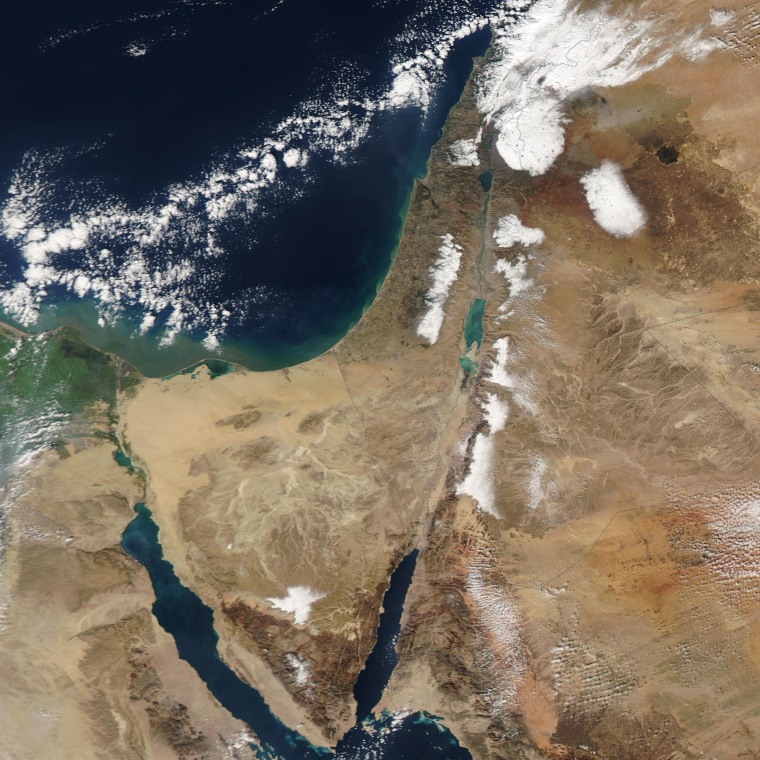In some places, December is a time to let it snow, let it snow, let it snow — but not in the Middle East. A snowstorm paralyzed Jerusalem last week, and although Gaza didn't get in on the snowfall, torrential rains forced thousands to flee their homes.
This view from the Moderate-Resolution Imaging Spectroradiometer on NASA's Terra satellite shows areas where snow was still on the ground as of Sunday. One swath covers Jerusalem and its surroundings. Patches of the West Bank, Jordan, Lebanon, Syria and Egypt's Sinai Peninsula are also blanketed in white. There's just a sprinkling of clouds over the sunlit scene.
Most of the signs of flooding can't be seen from Terra's 437-mile altitude, but if you look closely, you can spot light-colored plumes of sediment sweeping out from the western coast into the Mediterranean Sea. NASA says such plumes can be caused by floods and runoff, although it's also possible for stormy seas to bring sediment up to the surface.
Come back to PhotoBlog for future installments of the Cosmic Log Space Advent Calendar, which presents a daily view of Earth from space through Christmas. For other offerings in a similar vein, check out The Atlantic's Hubble Advent Calendar, Zooniverse's Advent calendar and the Galileo's Pendulum Science Advent Calendar.
Previously on the Space Advent Calendar:
- Day 15: Snaky Colorado river tricks the eye
- Day 14: A space farewell to Nelson Mandela
- Day 13: Happy St. Lucy's Day from space
- Day 12: Island of Love needs healing
- Day 11: A fractal puzzle, seen from space
- Day 10: London and Paris light the night
- Day 9: 'Starry Night' at sea
- Day 8: Mount Etna makes its mark
- Day 7: Staring down into Mount Vesuvius
- Day 6: Grand Canyon, seen and unseen
- Day 5: NASA salutes Nelson Mandela
- Day 4: Twin volcanoes act up in the Pacific
- Day 3: Syria's medieval marvel marred
- Day 2: Where the rain in Spain goes
- Day 1: Farewell, Earth ... Hello, Mars!
Alan Boyle is NBCNews.com's science editor. Connect with the Cosmic Log community by "liking" the NBC News Science Facebook page, following @b0yle on Twitter and adding the Cosmic Log page to your Google+ presence. You can also check out "The Case for Pluto," my book about the controversial dwarf planet and the search for new worlds.
